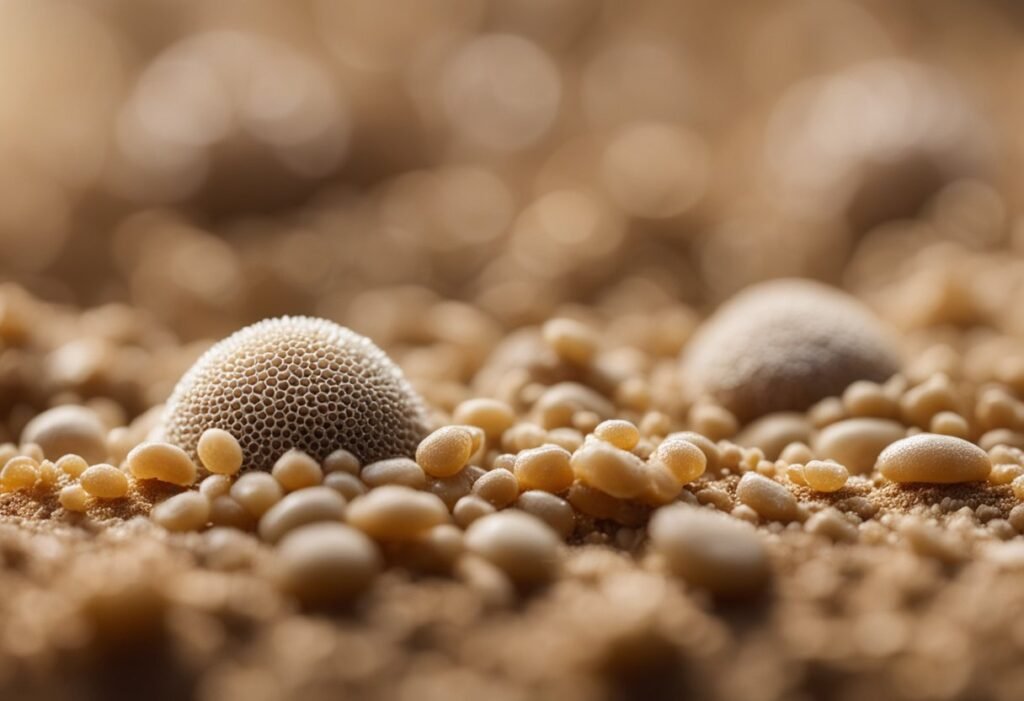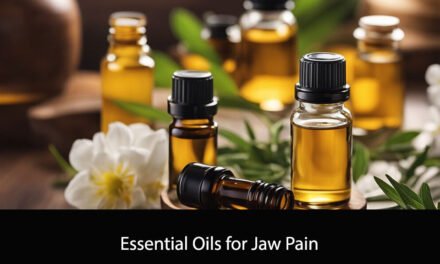Essential oils have been used for centuries to treat various skin conditions, including seborrheic keratosis. Seborrheic keratosis is a noncancerous skin growth that commonly appears in individuals over the age of 50. The growths can vary in color, shape, and size, and can be unsightly and uncomfortable. While there are medical treatments available, many individuals prefer to use natural remedies, such as essential oils, to manage their symptoms.
Tea tree oil is one essential oil that has been shown to be effective in treating seborrheic keratosis. Its antifungal and antibacterial properties make it an ideal choice for treating skin conditions. Tea tree oil can be applied directly to the affected area, but should be diluted with a carrier oil, such as coconut or jojoba oil, to avoid skin irritation. Other essential oils that have been used to treat seborrheic keratosis include lavender oil, frankincense oil, and oregano oil. However, it is important to note that essential oils should not be used as a substitute for medical treatment and individuals should always consult with their healthcare provider before using any new treatment.
Understanding Seborrheic Keratosis

Seborrheic keratosis is a common skin condition that affects many people, especially those over the age of 50. It is characterized by the growth of benign, non-cancerous skin lesions that can vary in size, color, and texture.
The exact cause of seborrheic keratosis is unknown, but it is believed to be related to genetics, sun exposure, and aging. It is not contagious and does not pose a threat to your health, but it can be unsightly and may cause discomfort or irritation if it rubs against clothing or jewelry.
The lesions typically appear on the face, chest, back, or other areas of the body that are exposed to the sun. They can range in color from light tan to dark brown and may have a waxy, scaly, or rough texture. Some lesions may also have a raised or bumpy surface.
If you have seborrheic keratosis, it is important to have a dermatologist examine your skin to rule out any other conditions that may resemble the lesions. In some cases, a biopsy may be necessary to confirm the diagnosis.
Overall, seborrheic keratosis is a common and harmless skin condition that can be easily treated with a variety of natural remedies and medical treatments.
Essential Oils: An Overview

Essential oils are highly concentrated plant extracts that have been used for centuries for their therapeutic properties. These oils are extracted from various parts of plants, such as leaves, flowers, roots, and bark, and are known for their potent fragrance and healing properties.
When it comes to seborrheic keratosis, essential oils can be a great natural remedy. These oils have antimicrobial, anti-inflammatory, and antioxidant properties that can help reduce the appearance of seborrheic keratosis and prevent further growth.
Some of the most effective essential oils for seborrheic keratosis include tea tree oil, frankincense oil, lavender oil, and lemon oil. Tea tree oil is known for its antifungal and antibacterial properties, which can help reduce inflammation and prevent infection. Frankincense oil is a powerful anti-inflammatory agent that can help reduce redness and swelling. Lavender oil is a natural antiseptic that can help prevent infection, while lemon oil is a natural astringent that can help tighten and firm the skin.
It’s important to note that essential oils should always be diluted before use. This is because they are highly concentrated and can cause skin irritation or allergic reactions if used undiluted. We recommend diluting essential oils with a carrier oil, such as coconut oil or jojoba oil, before applying them to the skin.
In conclusion, essential oils can be a great natural remedy for seborrheic keratosis. However, it’s important to use them safely and effectively. Always dilute essential oils before use and stop using them if you experience any skin irritation or allergic reactions.
Essential Oils for Seborrheic Keratosis

Seborrheic keratosis is a common skin condition that causes harmless, non-cancerous growths on the skin. While there is no cure for seborrheic keratosis, essential oils can help to manage the symptoms associated with this condition.
Tea Tree Oil
Tea tree oil is a popular essential oil that has been used for centuries for its antifungal and antibacterial properties. It can help to reduce inflammation and redness associated with seborrheic keratosis, and may also help to prevent secondary infections.
To use tea tree oil for seborrheic keratosis, mix a few drops of the oil with a carrier oil such as coconut oil or olive oil. Apply the mixture to the affected area twice a day.
Lavender Oil
Lavender oil is another essential oil that has anti-inflammatory and antibacterial properties. It can help to soothe the skin and reduce the appearance of seborrheic keratosis.
To use lavender oil for seborrheic keratosis, mix a few drops of the oil with a carrier oil such as coconut oil or olive oil. Apply the mixture to the affected area twice a day.
Frankincense Oil
Frankincense oil is known for its anti-inflammatory and anti-tumor properties. It can help to reduce the size of seborrheic keratosis growths and may also help to prevent new growths from forming.
To use frankincense oil for seborrheic keratosis, mix a few drops of the oil with a carrier oil such as coconut oil or olive oil. Apply the mixture to the affected area twice a day.
Overall, essential oils can be a helpful addition to your seborrheic keratosis treatment plan. However, it is important to speak with your healthcare provider before using any essential oils, especially if you have sensitive skin or are pregnant or breastfeeding.
How to Use Essential Oils for Seborrheic Keratosis
When using essential oils for seborrheic keratosis, it is important to dilute them properly before application. We recommend diluting essential oils with a carrier oil such as coconut oil, jojoba oil, or almond oil to prevent skin irritation.
To create a diluted essential oil blend, mix 1-2 drops of essential oil with 1 tablespoon of carrier oil. Apply the mixture to the affected area using a cotton swab or your fingers. Be sure to cover the entire area with the oil blend.
Some essential oils that are commonly used for seborrheic keratosis include tea tree oil, lavender oil, and frankincense oil. These oils have antimicrobial and anti-inflammatory properties that can help reduce the appearance of seborrheic keratosis.
It is important to note that essential oils should not be used as a substitute for medical treatment. If you have any concerns or questions about using essential oils for seborrheic keratosis, consult with a healthcare professional before use.
Safety Precautions When Using Essential Oils
When using essential oils for seborrheic keratosis, it is important to take certain safety precautions to avoid any adverse effects. Here are some things to keep in mind:
- Always dilute the essential oil with a carrier oil before applying it to your skin. Undiluted essential oils can cause skin irritation, burning, and even chemical burns.
- Test the diluted essential oil on a small patch of skin before using it on a larger area. This will help you determine if you have any allergic reactions or sensitivity to the oil.
- Avoid using essential oils on broken or inflamed skin. This can cause further irritation and delay healing.
- Do not ingest essential oils unless under the guidance of a qualified healthcare professional. Essential oils can be toxic if ingested in large amounts.
- Keep essential oils out of reach of children and pets. Some oils can be harmful if ingested or inhaled in large amounts.
- Store essential oils in a cool, dry place away from direct sunlight. This will help preserve their potency and prevent them from oxidizing.
- Always follow the recommended dosage and usage instructions for each essential oil. Using too much or too often can cause adverse effects.
By following these safety precautions, you can safely and effectively use essential oils to help manage seborrheic keratosis.
Conclusion
In conclusion, seborrheic keratosis is a common skin condition that can be treated with essential oils. While there is limited scientific evidence to support the use of essential oils for this condition, many people have reported positive results.
Some of the most effective essential oils for seborrheic keratosis include tea tree oil, lavender oil, and frankincense oil. These oils have anti-inflammatory and antimicrobial properties that can help reduce inflammation and prevent infection.
It is important to note that essential oils should never be used as a substitute for medical treatment. If you have seborrheic keratosis, it is important to consult with a dermatologist to determine the best course of treatment.
Overall, essential oils can be a useful addition to a comprehensive treatment plan for seborrheic keratosis. When used properly, they can help reduce symptoms and improve the overall appearance of the skin.
Frequently Asked Questions

How can I naturally treat seborrheic keratosis at home?
There are a few natural remedies that can help treat seborrheic keratosis at home. Some of these include using apple cider vinegar, tea tree oil, and coconut oil. However, it’s important to note that these remedies may not work for everyone and it’s best to consult with a healthcare professional before trying any new treatments.
What are the benefits of using frankincense oil for seborrheic keratosis?
Frankincense oil has anti-inflammatory and antiseptic properties that may help reduce the appearance of seborrheic keratosis. It may also help promote healthy skin cell growth and regeneration. However, more research is needed to fully understand the benefits of using frankincense oil for seborrheic keratosis.
Can tea tree oil be used to treat seborrheic keratosis?
Tea tree oil has antifungal and antibacterial properties that may help treat seborrheic keratosis. However, it’s important to dilute tea tree oil before applying it to the skin and to avoid using it near the eyes or mucous membranes. It’s also best to consult with a healthcare professional before using tea tree oil to treat seborrheic keratosis.
What are the side effects of Eskata treatment for seborrheic keratosis?
Common side effects of Eskata treatment for seborrheic keratosis include redness, stinging, itching, and scaling. In rare cases, more serious side effects such as blistering and scarring may occur. It’s important to discuss the potential risks and benefits of Eskata treatment with a healthcare professional before undergoing the procedure.
Are there any essential oils that can help with scalp eczema?
Some essential oils that may help with scalp eczema include lavender oil, tea tree oil, and chamomile oil. However, it’s important to dilute essential oils before applying them to the scalp and to avoid using them near the eyes or mucous membranes. It’s also best to consult with a healthcare professional before using essential oils to treat scalp eczema.
What are some effective ways to dissolve seborrheic keratosis?
Some effective ways to dissolve seborrheic keratosis include using cryotherapy, electrocautery, or curettage. These procedures should only be performed by a healthcare professional and it’s important to discuss the potential risks and benefits with them before undergoing the procedure.





